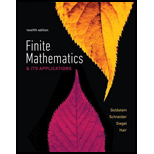
Concept explainers
(a)
The truth value of the statement “If the tax law has been revised, the deduction is allowed” if the statement “If the deduction is allowed, then the tax law has been revised” is always true.
(b)
The truth value of the statement “If the tax law has not been revised, the deduction is not allowed” if the statement “If the deduction is allowed, then the tax law has been revised” is always true.
(c)
The truth value of the statement “The deduction is allowed only if the tax law has been revised” if the statement “If the deduction is allowed, then the tax law has been revised” is always true.
(d)
The truth value of the statement “The deduction is allowed if the tax law has been revised” if the statement “If the deduction is allowed, then the tax law has been revised” is always true.
(e)
The truth value of the statement “The deduction is allowed or the tax law has been revised” if the statement “If the deduction is allowed, then the tax law has been revised” is always true.
Want to see the full answer?
Check out a sample textbook solution
Chapter 11 Solutions
Finite Mathematics & Its Applications (12th Edition)
- please do 8.1 q6arrow_forwardIf the price charged for a candy bar is p(x) cents, then x thousand candy bars will be sold in a certain city, where p(x)=158- X 10° a. Find an expression for the total revenue from the sale of x thousand candy bars. b. Find the value of x that leads to maximum revenue. c. Find the maximum revenue.arrow_forward3 The total profit P(X) (in thousands of dollars) from the sale of x hundred thousand automobile tires is approximated by P(x) = -x³ + 12x² + 60x - 200, x≥5. Find the number of hundred thousands of tires that must be sold to maximize profit. Find the maximum profit. The maximum profit is $ when hundred thousand tires are sold.arrow_forward
- A fence must be built to enclose a rectangular area of 5000 ft². Fencing material costs $4 per foot for the two sides facing north and south and $8 per foot for the other two sides. Find the cost of the least expensive fence. The cost of the least expensive fence is $ (Simplify your answer.)arrow_forwardThe number of fish swimming upstream to spawn is approximated by the function given below, where x represents the temperature of the water in degrees Celsius. Find the water temperature that produces the maximum number of fish swimming upstream. F(x) = x3 + 3x² + 360x + 5017, 5≤x≤18arrow_forwardA campground owner has 500 m of fencing. He wants to enclose a rectangular field bordering a river, with no fencing along the river. (See the sketch.) Let x represent the width of the field. (a) Write an expression for the length of the field as a function of x. (b) Find the area of the field (area = length x width) as a function of x. (c) Find the value of x leading to the maximum area. (d) Find the maximum area. x Riverarrow_forward
- A rectangular tank with a square base, an open top, and a volume of 1372 ft³ is to be constructed of sheet steel. Find the dimensions of the tank that has the minimum surface area. The dimensions of the tank with minimum surface area are (Simplify your answer. Use a comma to separate answers.) ft.arrow_forwardWrite an equation for the function graphed below 5+ 4 - -7 -6 -5 -4 -3 -2 -1 y = 3. 2 1 + 1 2 3 4 5 6 7 -1 -3 -4 5 -5+ aarrow_forwardi know that angle ZPY is 55 and arc zy is 110. How is arc wx 125arrow_forward
- Approximate graphically the radius and height of a cylindrical container with volume 50 cubic inches and lateral surface area 75 square inches. h 2лr The radius is in and the height is in. (Round to the nearest hundredth.) h Volume of a cylinder = r²h Lateral area of a cylinder = 2лrharrow_forwardFind the derivative of the following function. -8e5x y= 9x+2arrow_forwardi know that angle ZPY is 55 and arc ZY is 110. How is arc WX 125?arrow_forward
 Discrete Mathematics and Its Applications ( 8th I...MathISBN:9781259676512Author:Kenneth H RosenPublisher:McGraw-Hill Education
Discrete Mathematics and Its Applications ( 8th I...MathISBN:9781259676512Author:Kenneth H RosenPublisher:McGraw-Hill Education Mathematics for Elementary Teachers with Activiti...MathISBN:9780134392790Author:Beckmann, SybillaPublisher:PEARSON
Mathematics for Elementary Teachers with Activiti...MathISBN:9780134392790Author:Beckmann, SybillaPublisher:PEARSON
 Thinking Mathematically (7th Edition)MathISBN:9780134683713Author:Robert F. BlitzerPublisher:PEARSON
Thinking Mathematically (7th Edition)MathISBN:9780134683713Author:Robert F. BlitzerPublisher:PEARSON Discrete Mathematics With ApplicationsMathISBN:9781337694193Author:EPP, Susanna S.Publisher:Cengage Learning,
Discrete Mathematics With ApplicationsMathISBN:9781337694193Author:EPP, Susanna S.Publisher:Cengage Learning, Pathways To Math Literacy (looseleaf)MathISBN:9781259985607Author:David Sobecki Professor, Brian A. MercerPublisher:McGraw-Hill Education
Pathways To Math Literacy (looseleaf)MathISBN:9781259985607Author:David Sobecki Professor, Brian A. MercerPublisher:McGraw-Hill Education





